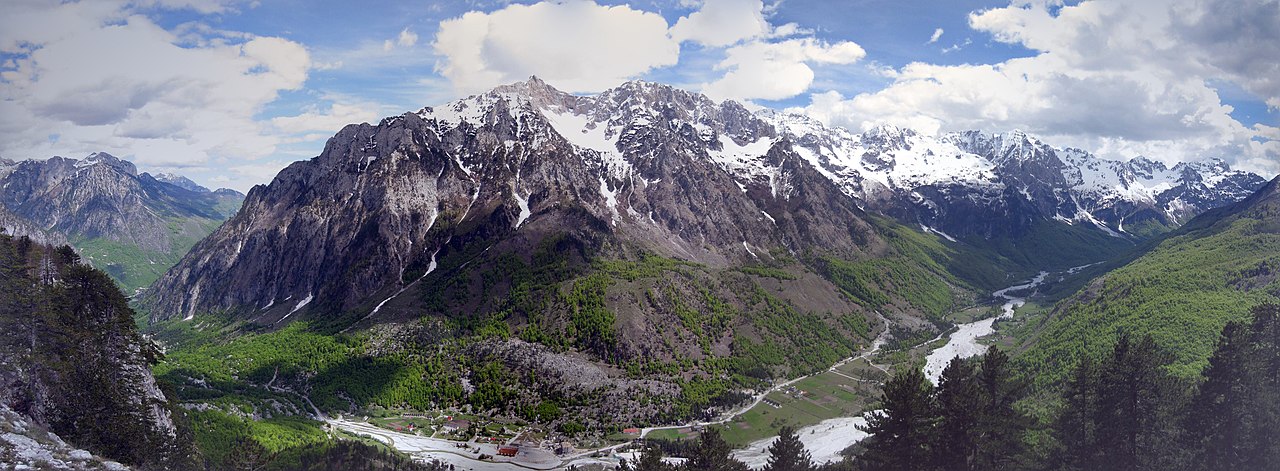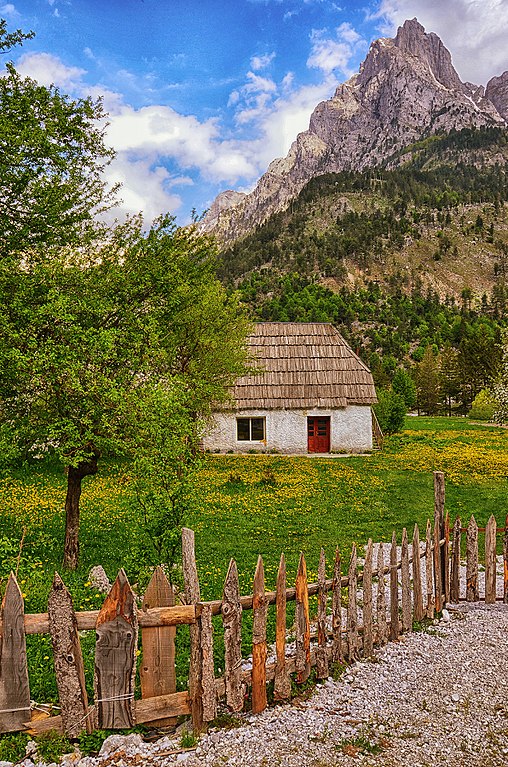Cultures of Honor: a Journey in The Heart of The Accursed Mountains
Hiking in Northern Albania, between history and tradition
In this first post of the new section dedicated to culture, society, and travels we're going to talk about Albania and the Albanian Alps - also known as the Accursed Mountains -, an area of the Eastern Europe cluster that's home to a culture of honor.

(Image Source: Wikimedia Commons - By Regularcheese - CC BY-SA 4.0)
***
“There is no fine for an offence to honour.
An offence to honour is never forgiven.
The person dishonored has every right to avenge his honour;
no pledge is given, no appeal is made to the Elders, no judgment is needed, no fine is taken.
The strong man collects the fine himself.
A man who has been dishonored is considered dead according to the Kanun”.
***
Its main pillars are: Honor (Nderi), Hospitality (Mikpritja), Right Conduct (Sjellja), Kin Loyalty (Fis, that can be better understood in terms of in-group collectivism).
[Note: With regard to the link between collectivism and honor, it's worth mentioning that in her study “Gjakmarrja: Albanian Highlander’s Blood Feud as Social Obligation” anthropologist Diana Gellçi "stresses that, in the absence of formal state power (like it was the case in Albania under the Ottomans), the individual members’ interests were totally subordinated to the group’s interests whereas 'the group' took full responsibility for its members. The individual member of the group never acted in his own right. He could only survive as a part of a group that worked as a whole. With regard to his group, the individual member acted and functioned as its representative only. With regard to his fellow group members, he had to follow rules that were based on total equality, reciprocity and solidarity."].
As British anthropologist Edith Durham observed while traveling in the highland area ("The sacredness of the guest is far-reaching. A man who brought me water from his house, that I might drink by the way, said that I now ranked as his guest, and that he should be bound by his honour to avenge me should anything happen to me before I had received hospitality from another"), hospitality is a fundamental value in the Albanian society: the Kanun, that in the eight book dedicates thirty-eight articles to the appropriate treatment of a guest, states that "the house of the Albanian is of God and of the guest." ("Shpija para se me qenë e Shqiptarit, asht e Zotit dhe e mikut", "Before the house belongs to the owner, it first belongs to God and the guest"), suggests that "the guest must be honored with bread and salt and the heart.", and warns that "if your hospitality is violated, the Kanun gives a choice of two paths: ruin or dishonor”. Furthermore, it advises that while “an offense against a father, a brother and even a cousin without heirs may be forgiven, an offense against a guest, it’s not forgiven" (according to the Kanun it is the host's duty to avenge their guest, should anything happen to them during their visit).
[On a historical note, besa, an Albanian concept that can be loosely translated as "pledge of honor", "solemn oath", is believed to be the reason why there were more Jews in Albania at the end of the second world war than beforehand, as besa "involves uncompromising protection of a guest, even at the point of forfeiting one’s own life". For more info about this particular matter, I recommend reading the book "Besa. Muslims Who Saved Jews in World War II"].
 An example of how honor in this region influences most areas of life, including architecture, can be found in Theth, a small village located in the centre of the Theth National Park: its 400-year-old 'lock-in tower' (kulla e ngujimit) served the purpose to shelter those involved in gyakmarrja, a blood feud (a topic tackled by Ismail Kadare in his novel "Broken April"). As explained by Thethi Guide, a travel company that offers tours all around the Albanian Alps, "When a person committed murder, he had the right to get one old man to evaluate the case. The old men played the role of the advocate for the party that elected him. The accused men were allowed to stay closed in the tower for 15 days, where within these days he had enough time to find the advocate and to explain the main circumstances of the murder. This tower was not the same as the tower of Mirdite where the murder authors stayed closet for the whole life but this was a tower where the meeting to reconcile the conflicts was held" (on a related note, click here to find out more about the "Spatial layout of the functions in Kulla", and here to read more about "The Traditional Tower Houses of Kosovo and Albania -Origin, Development and Influences").
An example of how honor in this region influences most areas of life, including architecture, can be found in Theth, a small village located in the centre of the Theth National Park: its 400-year-old 'lock-in tower' (kulla e ngujimit) served the purpose to shelter those involved in gyakmarrja, a blood feud (a topic tackled by Ismail Kadare in his novel "Broken April"). As explained by Thethi Guide, a travel company that offers tours all around the Albanian Alps, "When a person committed murder, he had the right to get one old man to evaluate the case. The old men played the role of the advocate for the party that elected him. The accused men were allowed to stay closed in the tower for 15 days, where within these days he had enough time to find the advocate and to explain the main circumstances of the murder. This tower was not the same as the tower of Mirdite where the murder authors stayed closet for the whole life but this was a tower where the meeting to reconcile the conflicts was held" (on a related note, click here to find out more about the "Spatial layout of the functions in Kulla", and here to read more about "The Traditional Tower Houses of Kosovo and Albania -Origin, Development and Influences").


Historical buildings aside, the national park is well-know for its stunning landscapes and hiking trails, among which:
- the Grunas Waterfall;

- Ndërlysaj and the Blue Eye of Theth (not to be confused with the Blue Eye of Sarandë in southern Albania, regarded as one of the most beautiful natural springs in the Balkans).

- For a selection of private tours around Albania, please check https://www.albaniatourguide.com/;
- For a list of the best hiking trails complete with trail maps, driving directions, photos, and reviews, please visit https://www.alltrails.com/albania;
- For travel information on the Valbona Valley and all aspects of travel in Northern Albania, please visit https://journeytovalbona.com/;
- For a list of guesthouses in Theth and/or in the Valbona Valley National Park, please refer to Booking.com;
- For information about the local cuisine, please download the guide to Albanian gastronomy available at this link.
****************************
- Dukagjini, L., Gjeçov, S., & Fox, L. (1989). "Kanuni i Lekë Dukagjinit =: The Code of Lekë Dukagjini". New York: Gjonlekaj Pub. Co.
- De, W. C. (2007). "Albania today: A portrait of post-communist turbulence". London: Tauris
- Durham, M. E. (2017). "High Albania". [Online]
- The New York Times: "Casting Light on Little-Known Story of Albania Rescuing Jews From Nazis". [Online]
- OFFICE OF THE COMMISSIONER GENERAL FOR REFUGEES AND STATELESS PERSONS: "Blood Feuds in contemporary Albania: Characterisation, Prevalence and Response by the State". [Online]
- Thethi Guide: "Shutting Tower Theth". [Online]
- Hofstede, Geert H. (1997). "Cultures and Organizations: Software of the Mind". New York: McGraw-Hill
- House, R. J., Hanges, P. J., Javidan, M., Dorfman, P. W., & Gupta, V. (2004). "Culture, leadership, and organizations: The GLOBE study of 62 societies". CA: Thousand Oaks

